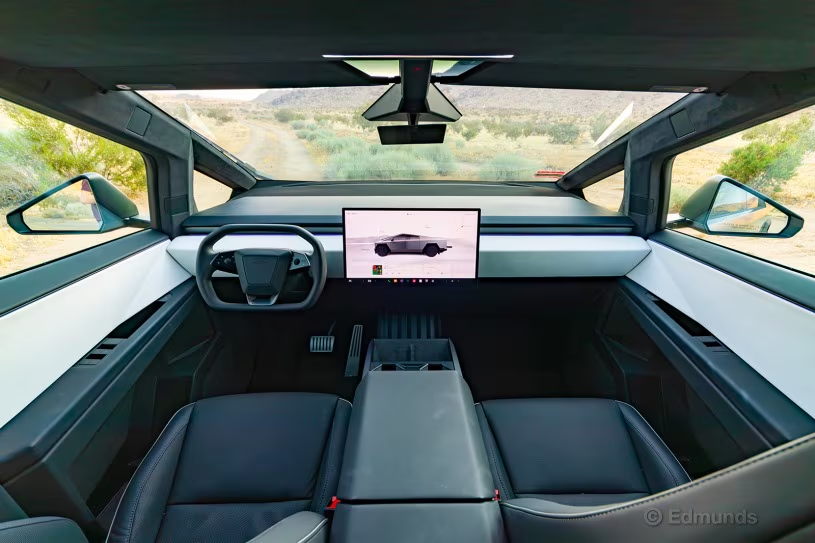In a world where technology is rapidly reshaping our daily lives, artificial intelligence (AI) is leading the charge in the evolution of electric vehicles (EVs) towards autonomous mobility. With the global market for autonomous vehicles projected to reach $556 billion by 2026, according to Bloomberg Green, the fusion of AI and EVs is not just an innovation—it’s a revolution. In this blog post, we will explore how AI-driven EVs are transforming the landscape of autonomous mobility and what this means for the future of transportation.
The Intersection of AI and EVs: A New Era in Mobility
How AI Enhances Electric Vehicle Performance
AI technology is redefining the capabilities of electric vehicles, making them smarter and more efficient. Advanced driver-assistance systems (ADAS) are a prime example of AI in action. These systems leverage machine learning algorithms and sensor data to improve safety features such as adaptive cruise control, lane-keeping assistance, and automated emergency braking.
- Real-time Data Processing: AI enables EVs to process vast amounts of data from the environment in real-time, allowing for faster and more accurate decision-making.
- Predictive Maintenance: AI algorithms can predict potential vehicle issues before they occur, reducing downtime and maintenance costs.
- Enhanced Battery Management: AI optimizes battery usage, extending the life and range of the vehicle—crucial for reducing range anxiety.
According to InsideEVs, Tesla’s Full Self-Driving (FSD) software, powered by AI, is a testament to how AI can push the boundaries of what autonomous vehicles can achieve.
Autonomous Driving: The Role of AI in Self-Driving Cars
AI is the backbone of autonomous driving technology, providing the intelligence required for vehicles to operate without human intervention. Companies like Waymo, Tesla, and Nissan are at the forefront of this innovation.
- Level 5 Autonomy: AI-driven EVs aim to achieve Level 5 autonomy, where the vehicle is fully self-driving in all conditions. As of now, most companies are operating at Level 2 or 3, where human intervention is still required.
- Machine Learning and Computer Vision: AI systems use machine learning and computer vision to interpret data from cameras and LIDAR sensors, allowing the vehicle to navigate complex environments safely.
- Safety and Efficiency: AI enhances safety through features like collision avoidance and traffic congestion management, promising a future of fewer accidents and more efficient road usage.
MIT Technology Review highlights that AI’s ability to learn and adapt is crucial for the development of fully autonomous vehicles, as it allows for continuous improvement in real-world conditions.
Practical Value: What You Need to Know About AI-Driven EVs
How to Charge Your AI-Driven EV
Charging infrastructure is vital for the success of AI-driven EVs. Here’s what you need to know:
- Home Charging: Installing a Level 2 charger at home is the most convenient option, providing up to 30 miles of range per hour of charging.
- Public Charging Networks: Companies like ChargePoint and Electrify America are expanding fast-charging networks, making long trips feasible.
- Innovative Charging Solutions: AI is also being used to develop new charging technologies, such as wireless charging and AI-driven grid management to optimize energy distribution.
Where to Buy AI-Driven EVs
When considering a purchase, look at these popular options:
- Tesla Model S: Known for its advanced FSD capabilities and extensive Supercharger network.
- Nissan Leaf: Offers ProPILOT Assist for semi-autonomous driving.
- Hyundai Ioniq 5: Features Highway Driving Assist II, combining navigation with adaptive cruise control for smooth driving.
What to Compare
When comparing AI-driven EVs, consider:
- Autonomous Features: Compare the level of autonomy and AI features offered.
- Battery Life and Range: Check the range and efficiency of the battery.
- Price and Incentives: Look for government rebates and incentives available for EV purchases.
The Road Ahead: The Future of AI-Driven EVs
The convergence of AI and EV technology is set to redefine mobility, with implications for urban planning, environmental impact, and our daily lives. As AI continues to advance, we can expect:
- Increased Adoption: With the reduction in cost and improvements in technology, AI-driven EVs will become more accessible to the general public.
- Smart Cities: Autonomous vehicles will play a crucial role in the development of smart cities, where transportation systems are integrated with urban infrastructure.
- Environmental Benefits: Reduced emissions and improved energy efficiency will contribute to global sustainability goals.
Engaging Conclusion
The fusion of AI and electric vehicle technology is not just shaping the future of autonomous mobility; it’s paving the way for a smarter, safer, and more sustainable world. As we look to the future, it’s exciting to imagine how these advancements will continue to evolve and transform our daily lives. Will AI-driven EVs become the norm in the next decade? Share your thoughts in the comments below, and join the conversation about the future of mobility.
As the journey towards fully autonomous vehicles continues, it’s clear that AI-driven EVs are more than just a technological advancement—they are a glimpse into a future where transportation is seamlessly integrated into our digital world. Stay tuned for more updates on how AI and EVs are steering us towards an autonomous tomorrow.

